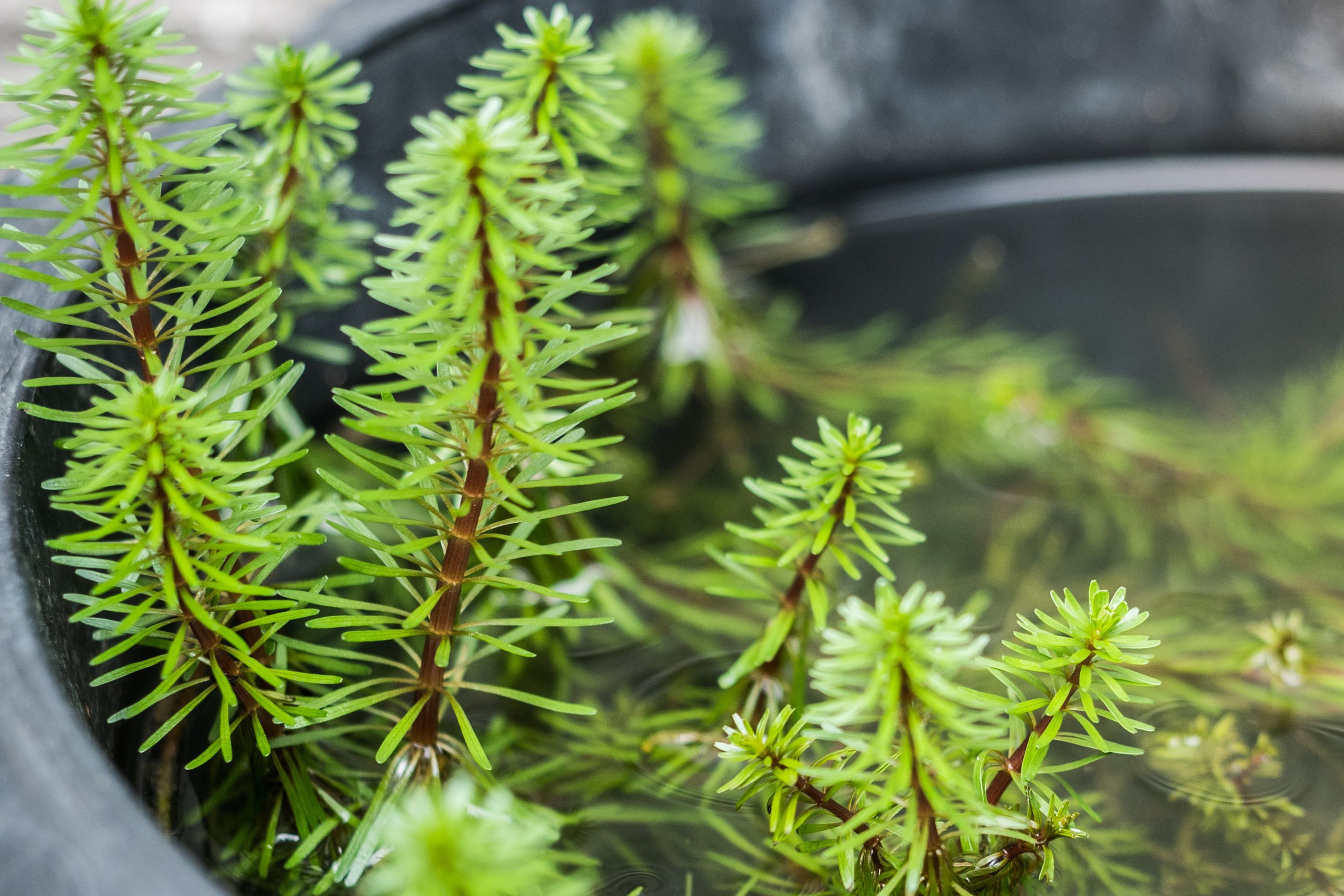Waterthyme
(Hydrilla)

Description
Hydrilla (waterthyme) is a genus of aquatic plant, usually treated as containing just one species, Hydrilla verticillata, though some botanists divide it into several species. It is native to the cool and warm waters of the Old World in Asia, Africa and Australia, with a sparse, scattered distribution; in Australia from Northern Territory, Queensland, and New South Wales. The stems grow up to 1–2m long. The leaves are arranged in whorls of two to eight around the stem, each leaf 5–20 mm long and 0.7–2 mm broad, with serrations or small spines along the leaf margins; the leaf midrib is often reddish when fresh. It is monoecious (sometimes dioecious), with male and female flowers produced separately on a single plant; the flowers are small, with three sepals and three petals, the petals 3–5 mm long, transparent with red streaks. It reproduces primarily vegetatively by fragmentation and by rhizomes and turions (overwintering), and flowers are rarely seen. They have air spaces to keep them upright. Hydrilla has a high resistance to salinity compared to many other freshwater associated aquatic plants. Hydrilla closely resembles some other related aquatic plants, including Egeria densa and Elodea canadensis. Synonyms include H. asiatica, H. japonica, H. lithuanica, and H. ovalifolica. Hydrilla verticillata is allelopathic to the common hornwort (Ceratophyllum demersum) and prickly hornwort (C. muricatum), that is, it produces compounds that inhibit growth of the latter two species. Hydrilla is naturalized and invasive in the United States following release in the 1950s and 1960s from aquariums into waterways in Florida, due to the aquarium trade. It is now established in Canada and the southeast from Connecticut to Texas, and also in California. By the 1990s control and management were costing millions of dollars each year. Specifically, a Florida west coast aquarium dealer shipped live Hydrilla from Sri Lanka under the common name "Indian star-vine. After these plants were considered unsatisfactory, they were dumped into a canal near Tampa Bay, where they flourished. By 1955, the plants found their way from Tampa to Miami as they were transported for cultivation and pet trade sale. It is believed that several undocumented cases of accidental or careless releases followed, as there was extensive spread of the Hydrilla throughout Florida and the southeastern U.S.
Taxonomic tree:







